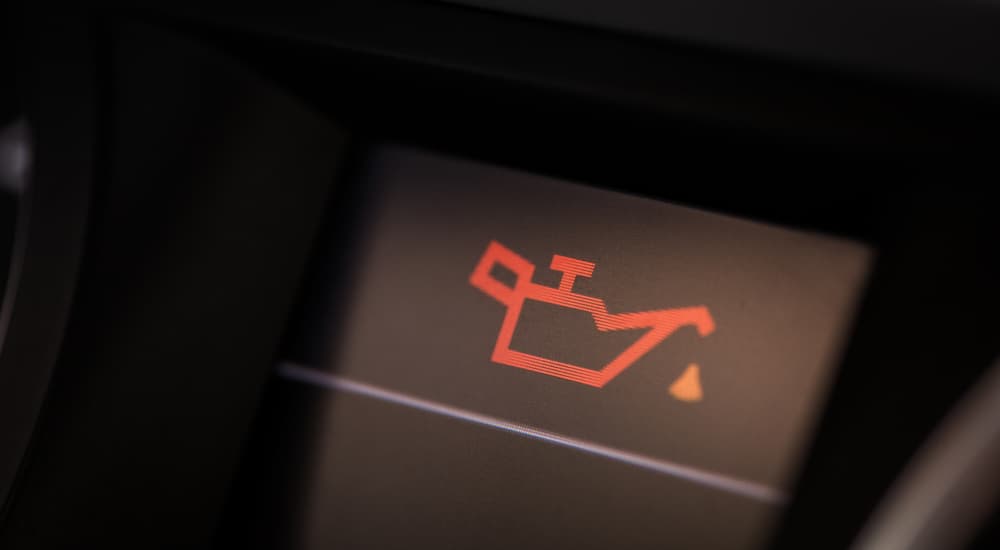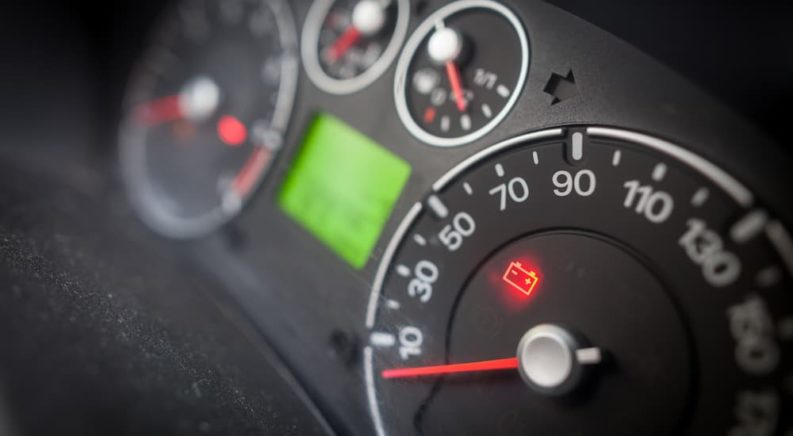Your owner’s manual should provide a detailed maintenance schedule that outlines when every hose, filter, belt, fluid, and components replacement needs to be performed. This schedule is an important document when it comes to Honda car maintenance, and faithfully following it can potentially add years to a vehicle’s life, ensure the best possible fuel efficiency, and lead to a better return on investment should you ever decide to sell or trade up. Unfortunately, most car problems don’t care if you’ve followed the manufacturer’s recommended schedule.
Problems can arise out of the blue, throwing a wrench into your day and having you look for the closest service station. Some malfunctions can be rather obvious, while others might be nearly imperceptible. So how’s a driver to tell a well-functioning vehicle from one that might be about to ruin their day? Your Honda vehicle is equipped with a wide array of warning lights that can alert a driver to many potential problems as soon as they pop up. While never fun to see in the middle of a leisurely ride, these warning lights should be taken seriously if drivers hope to catch minor repairs before they turn into major projects. Here are six of the most common Honda warning lights, what they mean, and how to deal with them.
#1: Check Engine Light
The most obvious sign of a vehicle in trouble is, frustratingly, also often one of the most ambiguous. The Check Engine light (CEL) it’s that bright light accompanied by a pictogram of an engine that’s been known to strike fear into the heart of even the most adept driver. For Honda specifically, it is called the Malfunction Indicator Lamp, but we are going to stick to calling it the Check Engine light as that is what most of us know it as. On most vehicles, the CEL gives drivers very little information aside from the fact that something, somewhere, is awry. While it looks like an engine, the problem that triggers a CEL might not even be directly related to the engine itself. It could be something like the vehicle’s emissions system, oxygen sensor, or even something as seemingly unrelated and petty as a loose gas cap setting it off.
There are some details that can be gleaned from the illuminated lamp alone. If a CEL is solid, the issue hasn’t risen to the level of an emergency. That doesn’t mean you should keep driving around with a lit CEL until it turns into something more serious, but in most cases, you have plenty of time to find a mechanic and schedule an appointment. If the CEL is flashing, on the other hand, it’s all-hands-on-deck time. This phenomenon will usually be accompanied by some more obvious signs of distress, but even if it’s not, you probably want to pull over to prevent any serious, long-lasting damage to the vehicle.
Translating a CEL into plain English requires drivers to either invest in their own On-Board Diagnostic II (OBD II) reader or take the vehicle to a local mechanic, dealership, or auto parts store. Once you’ve pinned down the DTC that caused the CEL to come on, it’s much easier to track down the issue to its source. Consider investing in your own OBD-II reader because you might be able to save some serious money that would otherwise be spent paying a mechanic to diagnose the problem. These can be found at almost any auto parts store, and a new breed of Bluetooth-based readers that connect to an app on your smartphone have exploded in popularity in recent years. Available for as little as $15, these code readers make a valuable addition to any DIY mechanic’s toolbox.

#2: Low Oil Pressure Light
Oil is the lifeblood of any vehicle, lubricating the vital and expensive components inside the engine to remove harmful sludge and provide a layer of protection between fast-moving metal components. Your Honda features a Low Oil Pressure (LOP) light which will illuminate if the vehicle’s oil pressure drops too low while the vehicle is in operation. A vehicle should typically have at least five PSI of oil pressure, with the LOP light illuminating if it falls below this level.
Like most lights on the dashboard, the LOP light should illuminate when the ignition is first switched on and then quickly fade away as the vehicle starts. This is a good opportunity to become familiar with the LOP light, which usually looks like an old-timey oil can with a drop of oil dripping from the spout. If the oil pressure light comes on when you’re driving, take heed, as it can indicate a potentially catastrophic problem. If a LOP light comes on and stays on when you’re driving, immediately pull over and shut off the engine. Without proper fuel pressure, your vehicle’s engine can tear itself to pieces with unlubricated metal components grinding against each other within the motor itself.
Give the car time to cool down––five minutes should do the trick––then pop the hood and take an oil reading using the dipstick. Low oil pressure doesn’t necessarily mean a low oil level, but it can be related, so make sure the oil reaches the acceptable range on the dipstick and add more oil if it doesn’t. After confirming the oil level with another dipstick reading, start the engine and keep an eye out for the LOP light. If it doesn’t blink out within ten seconds, it’s an indication that there’s a larger issue at hand. If the LOP light starts flashing and then goes out, it’s a sign that the oil pressure temporarily dropped before recovering. This could indicate a faulty oil sensor or low oil pressure caused by a lack of motor oil. It’s not as serious as a steadily illuminated LOP light but should still be dealt with ASAP.
#3: Braking System Lights
The Braking System Failure (BSF) light indicates a failure within the braking system. This is usually related to a lack of pressure within the system due to a leak or other malfunction, which could prevent the brakes from properly engaging when you push down on the pedal. Aside from the BSF, another significant indication of lost pressure within the braking system is a soft, mushy brake pedal that doesn’t provide the normal amount of brake power. You can try adding brake fluid to the master cylinder reservoir to correct the problem, but given their importance, brake repairs are often best left to the professionals.
The BSF is one of three lights related to your vehicle’s braking system and probably the most important. The other two are the Brake light, which indicates that the emergency parking brake is engaged, and the Anti-Lock Brake (ABS) light, which points to an issue with the car’s anti-lock braking system. If the latter light is illuminated, pull over, shut off the engine and then start the car back up. If the ABS light is still illuminated after restarting the car, make an appointment with your trusted Honda mechanic or dealership as soon as possible. The ABS system will often be disengaged for safety purposes when the light is illuminated, making for much more dangerous braking in emergency situations.
#4: Charging System Warning Light
Your Honda is equipped with a light to alert you of a failure with the vehicle’s charging system. Typically shaped like a car battery with distinctive plus and minus symbols, this light could mean that you’re experiencing a total or partial loss of electrical power. In normal circumstances, a vehicle’s alternator recharges the battery while you drive, ensuring there’s always enough power to run various electrical systems and, most importantly, turn over the engine when you go to start the car. If a vehicle is running solely on battery power, it’ll slowly deplete, which can cause the vehicle to come to a complete stop.
There are a number of things that can cause the vehicle to switch on the Charging System light, from a failing alternator or battery to broken drive belts, corroded wires and connections, or a faulty computer system. If the Charging System light comes on, your miles could be limited, so try to locate the nearest mechanic, or you’ll soon find yourself on the side of the road making the dreaded call to AAA.
#5: Supplemental Restraint System Light
Lastly, the Supplemental Restraint System (SRS) light points to a potential issue with your Honda’s airbags and restraints. While it won’t cause any damage to the vehicle itself, it could make all the difference to the driver or passengers in the event of an accident. The SRS is responsible for deploying the airbags and tightening seat belts when the vehicle’s computer detects an accident. In some newer vehicles, the system might also shut down the fuel pump and disconnect the battery to prevent post-accident fires.

#6: Temperature Warning Light
An engine can get pretty hot during normal operation, but if it passes a certain threshold, expect to see the Temperature Warning light come on. Usually shaped like a thermometer partially immersed in water, the Temperature Warning light indicates that a vehicle has begun to overheat. These are often used in tandem with a dashboard coolant temperature gauge, which uses an arrow and graduated lines to display the vehicle’s current coolant temperature.
A short-term fix might be adding more coolant to the reservoir found under the hood, but in a well-functioning engine, coolant loss shouldn’t occur in the first place. If the Temperature Warning light illuminates and stays on, pull over to the side of the road and let the car cool down until the temperature indicated by the gauge on your dashboard is back to an acceptable level. Then turn the car back on and crank your vehicle’s cabin heating system, which will draw hot air away from the engine and provide some temporary reprieve. Topping off the reservoir with coolant might be enough to get you home or to your local service station, but there’s probably a larger issue at play that requires a professional opinion.
Don’t Ignore the Warning Lights
While vehicles are getting smarter all the time, many still rely on these old-fashioned warning lights to convey important information to the driver. No one likes to see a glaring red warning light pop on in the middle of their commute or after-school carpool, but failure to address these indicators can cause a problem to snowball in a hurry. While a Check Engine light might be frustratingly imprecise, it’s also one of your best resources when it comes to tracking down potentially serious and expensive engine problems. The other, less common warning lights might rarely, if ever, come on during the life of your vehicle, but when they do, they’re best not ignored.
We’ve covered six of the more common and important warning lights found on many Honda models, but there are plenty more icons on your dashboard that can tell you a lot about what’s going on under the hood or in various systems throughout the vehicle. If you spend a little quality time with your owner’s manual and get familiar with these lights, you’ll be well prepared the next time one of these warning lights blinks on.

